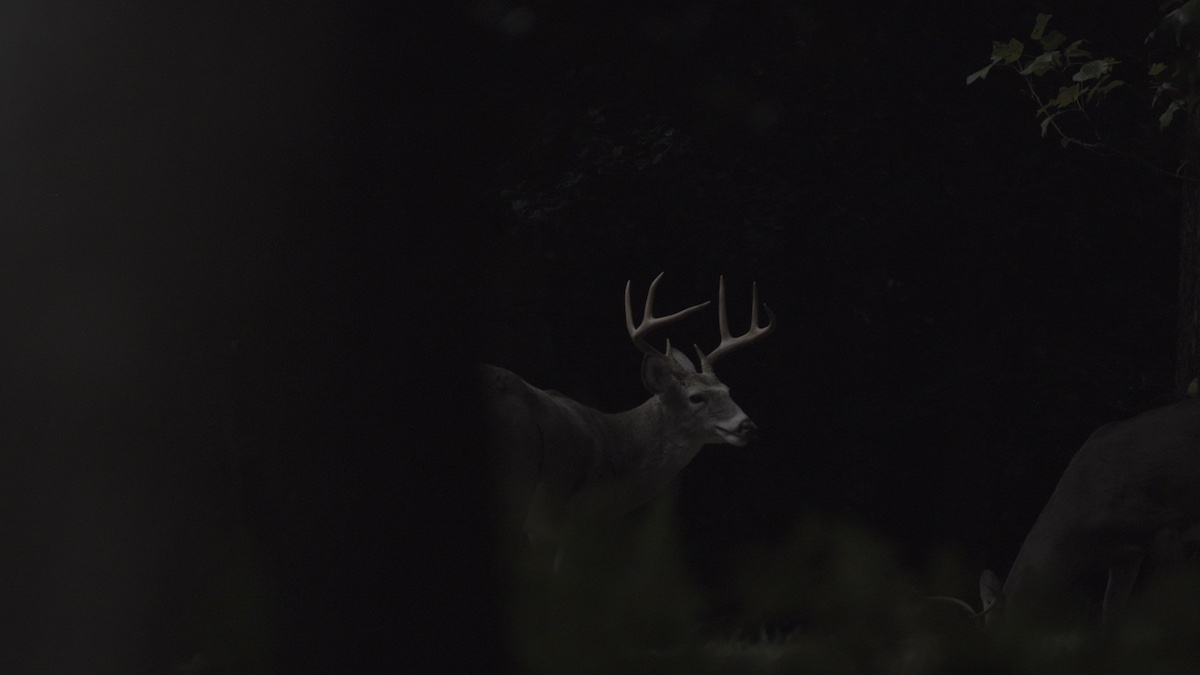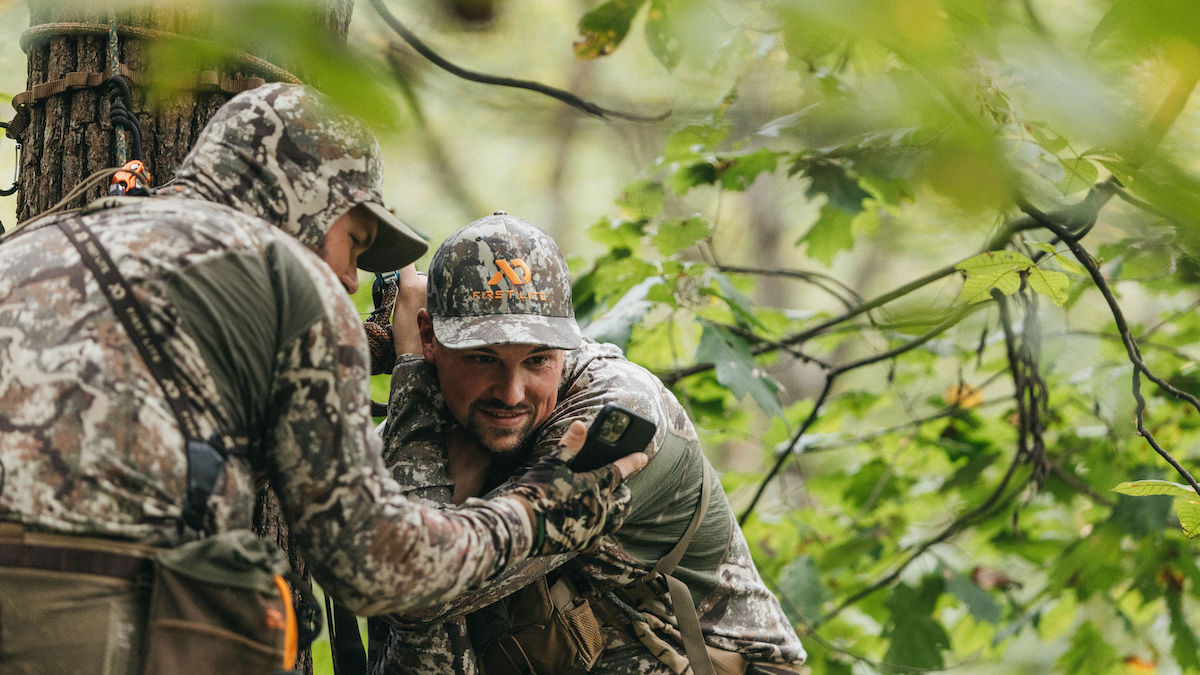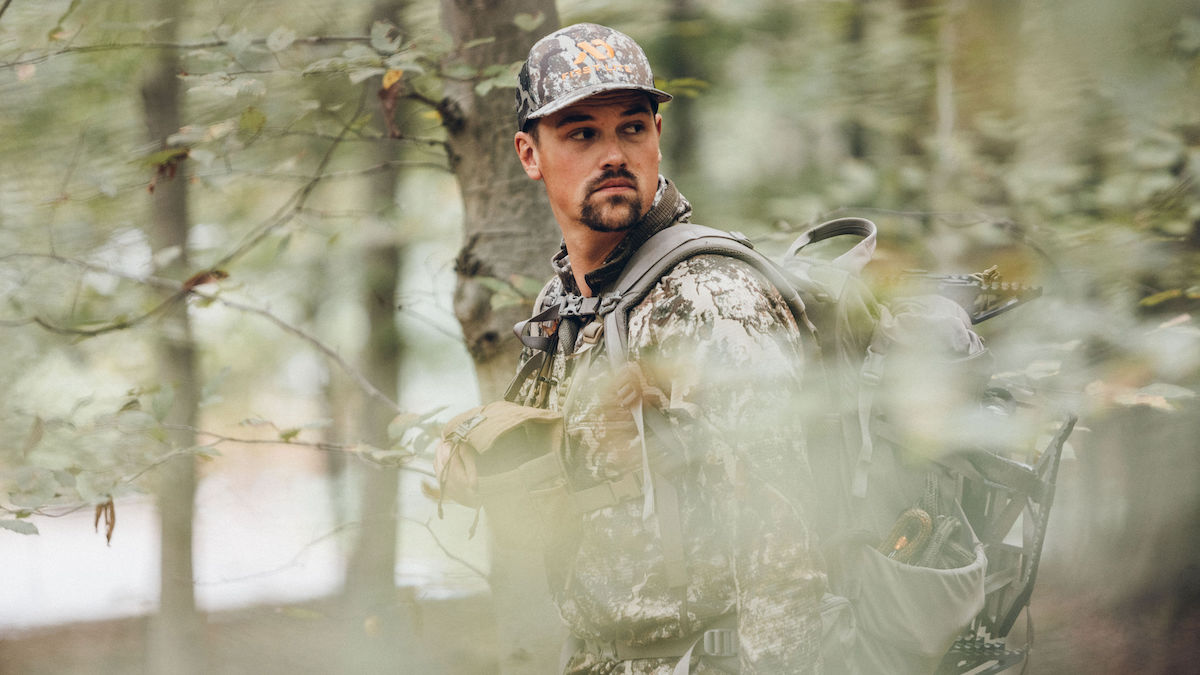
“Let’s get some pho!”
“What the hell is pho?” I asked.
Pho, which I later discovered is a Vietnamese noodle dish, had never been recommended to me before as a pre-hunt menu item. But, as I’d soon learn, spicy noodles in broth would be just one of many new experiences on my first urban deer hunt.
Culinary epiphanies aside, here’s what I learned while chasing deer amidst the barking dogs, roaring lawnmowers, and nervous suburbanites of the greater Washington D.C. area.
Why Hunt Urban Deer? I was here because my buddy and host on this trip, Taylor Chamberlin, told me that urban deer hunting is some of the most fun you can have with a bow in your hands. That was pretty convincing coming from someone who hunts urban environments upwards of 200 days a year, so I packed my bow, bags, and tree saddle and caught a flight to Dulles International Airport.
I first heard Chamberlin rave about his specialty back in 2019 and his pitch was this. All across America, right underneath our metropolitan noses, is a wealth of deer hunting opportunities. Whether in Detroit, Atlanta, or Washington D.C., whitetail deer are thriving in urban environments. So much so that they’re considered dangerous pests. Kids are getting Lyme disease, landscaping is getting decimated, and cars are getting wrecked amidst nightly white-knuckle commutes.
The solution to this problem involves another group of people seeking to solve a problem of their own: Bowhunters in search of hunting access.
With long seasons, high deer numbers, and a short commute to hunt, urban bowhunting presents a tremendous opportunity for hunters living amidst the concrete jungle. According to Chamberlin, 200 to 400 deer per square mile reside in some areas like this. That includes does, fawns, yearling bucks, and yes, even big ones. Right out the backdoor are all the deer you could ever want.
Yes, the experience is different, but Taylor assured me that if you’re willing to put in the effort, the rewards are well worth it. As we toured a series of neighborhoods our first night together, I quickly came to see what he meant. There was a doe family group here, another group there and there and there, and seven bucks under an oak tree in one front yard. My jaw dropped.

The Rules of Urban Deer Hunting My first hunt would be a tag-along with Taylor to pick up as many best practices for urban hunting as possible. We drove ten minutes outside of D.C., swinging left and right around narrow curves that dropped in and out of gullies and, finally, into a secluded driveway tucked amidst looming upper-middle-class homes. We parked on the blacktop, got dressed while hidden behind our vehicles, and immediately began my lessons. Chamberlin told me that the first rule of urban deer hunting was to be inconspicuous. Out of sight, out of mind was the best approach to the mostly non-hunting and sometimes suspicious residents in these areas.
Rule two, thankfully deer-focused, was to never bust through “the bubble.” The whitetails in these neighborhoods are accustomed to a steady dose of human activity in certain areas. As long as humans stay on their side of the line, all is well. But as soon as a person busts through that bubble of safety and goes into the woods, these urban deer can become just as flighty as any other whitetail in the country. To ensure you don’t bust the bubble, Taylor explained, it’s often better to leave the most “bucky” looking spots back in the cover alone and instead hunt the edges where deer aren’t spooked by human activity.
Following this principle, Taylor selected a tree situated right on the edge of the homeowner’s perfectly manicured lawn. Behind us, I could see across the yard to a lovely porch with well-positioned patio furniture and, in the other direction, another fenced-in yard with a gorgeous in-ground swimming pool. Again, this was a first.
As we lounged back in our saddles and impatiently awaited the neighboring lawn care service to wrap up their work, Taylor explained another key difference in this kind of hunting. The supreme importance of shot selection.
Given the very tight quarters inherent in this kind of spot, it’s of even greater than normal importance to ensure very fast and clean kills. A double-lung shot deer that runs 100 yards in farm country is great, but in a neighborhood that might mean a deer running across three or four different properties that you now need to find owners for and get permission to cross. For this reason, Taylor explained, he seldom takes shots beyond twenty or twenty-five yards, and the conditions and situation must be absolutely ideal. A calm deer, a perfect position, close quarters, and a heart shot. Fast forward a couple of hours and he demonstrated just how serious he is about this.
At last light, a group of three does popped out of the neighbor’s treeline, crossed the yard we were perched above, and swung our direction. The lead doe passed at 30 yards broadside as I held my breath, waiting for Taylor’s arrow to fly at any moment. But he stayed at full draw, then let down, as she dropped into the wooded draw below us. I was impressed. He practiced what he preached.

Getting Access From here, I took off for three days on my own. I spent the first eight hours attempting to gain hunting permission amidst the most extravagant display of wealth I’ve experienced in my life. Neighborhood after neighborhood of Hollywood-style mansions complete with private tennis courts, infinity pools, and, in one case, what looked like a helipad. These were not the types of doors I was used to knocking on. Nonetheless, I came up with a pitch, combed my hair, wiped the wrinkles out of my khakis, and walked the plank right to the front porch.
In all, I knocked on 14 doors, and by the end of that eight-hour marathon, I was emotionally reduced to a corn husk. Out of all that knocking, I got mostly polite nos, a handful of dirty looks, and once, miraculously, a yes. It was just a thin sliver of a couple acres alongside a road, but it was something. In addition to that, after seeing me suffer, Taylor generously offered a few of his spots as well.
First Hunts I shuffled out that first night, still in a state of shellshock, and slipped into a small wooded creek bottom tucked between two neighborhoods. High in a tree, it felt like I was hunting back in the Midwest for just a moment. It was still. The leaves lightly shook in the breeze and birds sang.
Then a large black SUV pulled up behind my vehicle. It lingered. Someone got out and started poking around. Ten minutes later, my cameraman mysteriously got a text message from an unknown number.
“What are you doing here?”
Strange things happen in the CIA’s backyard it seems. But disconcerting text messages aside, I soon had a mature buck at 40 yards. I was shocked. Excited. Shaking. Taylor was right, this was fun. Bizarre, but fun.
Given Taylor’s advice about long shots, I held off on releasing an arrow. But my hopes soared. Over the next two days I continued exploring the urban options available to me, hunting the yard I got permission on several times and having close calls with a handful of does and even a chance at a 1.5-year-old buck that I ultimately passed. On one hand, this seemed pretty great. I saw plenty of deer and came awfully close to sending an arrow or two, all within just a hop and a skip from a few great coffee shops. What’s not to like?
Worst Fears But there was another side to this experience, lingering just beneath the surface, a low-level tension I couldn’t escape. When getting ready before each hunt I was on eggshells, worried a neighboring landowner might see me. After dark, I half sprinted to my vehicle, hoping to evade unwanted attention or concern. Almost every single hunt was interrupted by lawn care services, and if they weren’t working at the moment I knew it was just a matter of time. And what if, God forbid, the lawnmowers never showed and I did get a shot at a deer, but it ran into some unhappy neighbor’s yard or swimming pool?
On the last evening of my hunt, the worst of my fears came to fruition.
I had a doe at 25 yards. I held at full draw for what felt like a full two minutes until miraculously, she finally stepped out from behind the tree. The shot hit low.
Two hours later, the blood trail led onto a neighbor’s property. At their door I explained the situation and asked for permission to continue trailing but, from the other side of the glass, the homeowner hollered for me to leave. “NO!” I could not come onto the property. He insisted, despite my retreat and apologies, that he would call the cops.
And he did.

The Truth The truth is that urban hunting can be a heck of a good time. I can see why Taylor enjoys it so much, and I have an immense level of respect for what he and other avid urban bowhunters can achieve in these environments. This is not easy hunting, but the most rewarding hunts never are. For those that live in these urban areas, the opportunity to hunt close to home seems an absolute godsend.
At the same time, I recognize that this kind of hunt is not for everyone, myself included. Despite the high deer numbers, nice bucks, and great coffee. A successful hunt, by definition, entails the seeking out of a thing one desires. But for me, I realize now that it involves the escape from something else too: All that is urban.
Stay tuned for this hunt to be featured on MeatEater’s newest whitetail show, coming to the MeatEater YouTube channel later this year.






Conversation